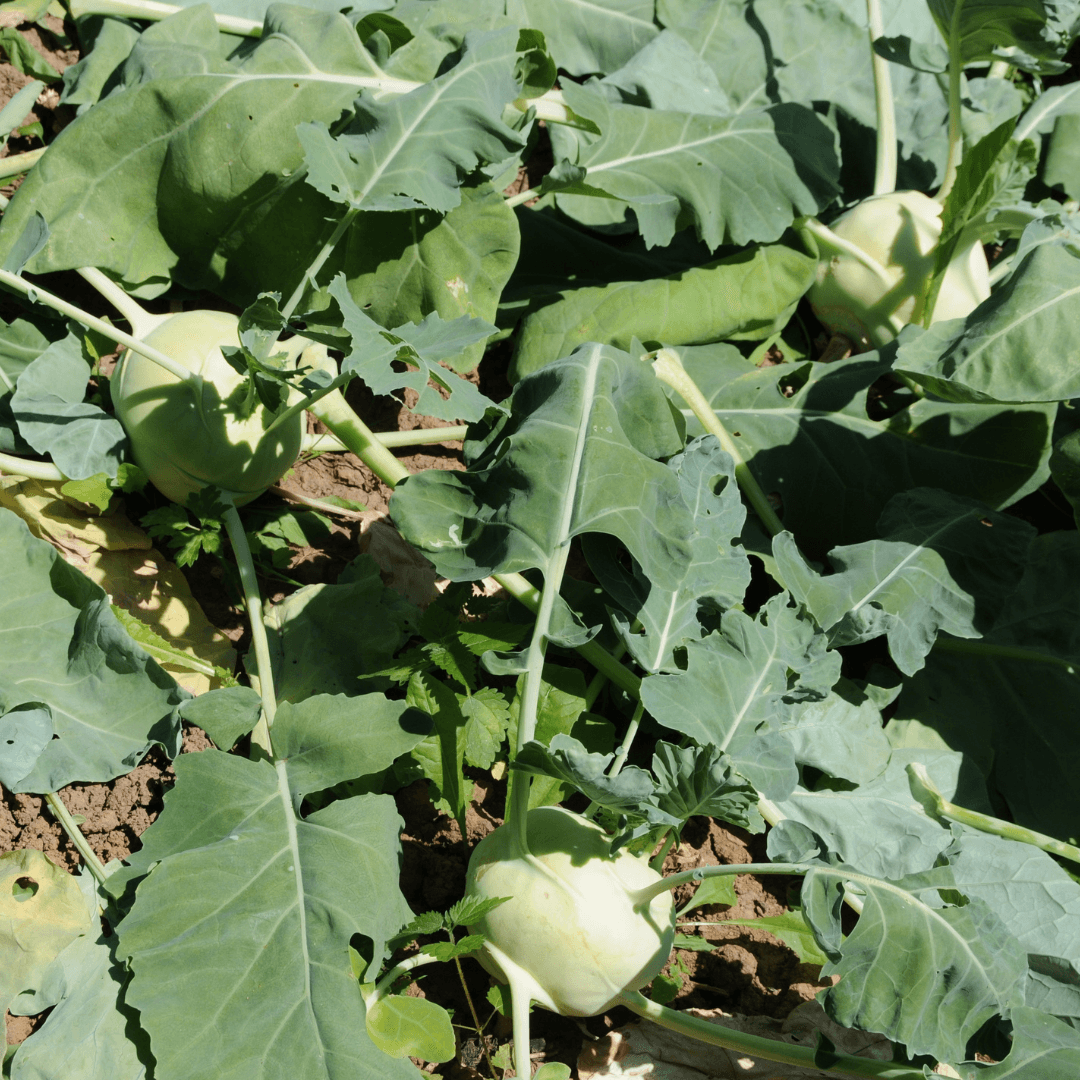Succession Planting for Continuous Harvests
Succession planting is a proven method for increasing kohlrabi harvest and maintaining a steady supply throughout the growing season. Kohlrabi thrives in cool weather, so planning your planting schedule is essential. Start sowing seeds in early spring as soon as the soil is workable, and continue planting every two to three weeks until early summer. For a fall crop, plant again in late summer when temperatures begin to cool.
Steps for Successful Kohlrabi Succession Planting:
- Early Start: Begin with cold-hardy varieties like ‘Early Purple Vienna’ or ‘Kolibri’ to kickstart your season. These varieties mature quickly and can tolerate light frosts.
- Staggered Sowing: Sow small batches of seeds at intervals to ensure overlapping harvests.
- Seasonal Transition: Switch to heat-tolerant varieties like ‘Kossak’ for midsummer plantings, followed by frost-tolerant types in the fall.
By carefully timing your plantings, you’ll enjoy continuous yields and reduce the risk of your crops bolting or becoming woody in unsuitable weather.
Companion Planting Benefits
Companion planting enhances garden productivity by promoting successful kohlrabi growing through natural pest control, improved nutrient use, and efficient space management. Kohlrabi pairs well with crops that either repel pests or complement its growth habit.
Best Companions for Kohlrabi:
- Lettuce and Spinach: These leafy greens grow quickly and take up minimal space, thriving in the shade of taller kohlrabi plants.
- Beets and Onions: These root vegetables grow well alongside kohlrabi without competing for resources.
- Marigolds and Nasturtiums: These flowering plants repel pests like aphids and flea beetles, common threats to kohlrabi.
Plants to Avoid:
Avoid planting kohlrabi with pole beans or tomatoes, as they can stunt its growth or attract pests that may also damage kohlrabi.
Companion planting is an eco-friendly way to grow more kohlrabi while promoting biodiversity and natural garden health.
Soil Management for High-Yield Kohlrabi
Healthy soil is the foundation of any thriving garden, and kohlrabi is no exception. Ensuring the best kohlrabi soil involves a balance of nutrients, pH levels, and proper preparation techniques.
Ideal Soil Conditions:
- pH Level: Kohlrabi prefers a soil pH of 6.0–7.5. Test your soil and amend with lime or sulfur as needed.
- Nutrient Balance: Incorporate organic matter like compost or well-rotted manure to improve fertility. Kohlrabi benefits from nitrogen early in its growth but requires phosphorus and potassium as it develops its bulb.
- Drainage: Kohlrabi thrives in well-drained soil. Raised beds or mounds are excellent for preventing waterlogging.
Organic Soil Amendments:
- Bone Meal: Boosts phosphorus levels, essential for bulb formation.
- Compost Tea: Provides a natural nutrient boost during the growing season.
- Cover Crops: Plant cover crops like clover in the off-season to fix nitrogen and improve soil structure.
Maintaining fertile, well-drained soil is key to cultivating high-yield kohlrabi.
Pest and Disease Control
Pests and diseases can significantly impact your kohlrabi crop. Implementing organic kohlrabi pest control methods helps protect your plants without resorting to chemical treatments.
Common Pests:
- Cabbage Worms: These green caterpillars feed on leaves and can weaken your plants. Use floating row covers to keep moths from laying eggs.
- Flea Beetles: Small holes in leaves indicate flea beetle damage. Sprinkle diatomaceous earth around the plants or plant trap crops like radishes nearby.
- Aphids: These sap-sucking insects can spread diseases. Introduce beneficial insects like ladybugs or use insecticidal soap.
Common Diseases:
- Clubroot: This fungal disease causes swollen roots and stunted growth. Practice crop rotation and avoid planting brassicas in the same location annually.
- Black Rot: A bacterial infection that can devastate your crop. Ensure proper spacing and avoid overhead watering to reduce moisture on leaves.
Monitoring your garden regularly and employing preventative measures will help you maintain healthy plants and maximize kohlrabi yield.
Maximizing Yield Per Square Foot
Whether you have a small backyard plot or a large farm, optimizing space is essential for high-yield kohlrabi. Use intensive planting techniques to make the most of your available area.
Strategies for Increased Efficiency:
- Square Foot Gardening: Allocate one square foot for each kohlrabi plant. This method maximizes density while allowing adequate airflow.
- Intercropping: Combine kohlrabi with fast-maturing crops like radishes or arugula. Harvest the companion crops early, leaving room for the kohlrabi bulbs to expand.
- Vertical Gardening: While kohlrabi itself doesn’t grow vertically, trellising nearby climbing plants like peas can free up horizontal space.
Tips for Urban Gardeners:
If space is limited, consider growing kohlrabi in containers. Choose deep pots with ample drainage and fill them with nutrient-rich soil to ensure robust growth.
Efficient use of space and resources ensures you can grow more kohlrabi without compromising quality or yield.
In Summary
By implementing advanced kohlrabi techniques, you can increase kohlrabi harvest and enjoy consistent, bountiful yields. Succession planting ensures a steady supply, while companion planting and organic pest control protect your crops and enhance garden biodiversity. Proper soil management and efficient space use are essential for successful kohlrabi growing, allowing you to achieve maximum productivity in any garden setting.
From selecting the best kohlrabi soil to adopting eco-friendly practices, these strategies promote sustainable, high-yield farming. With a thoughtful approach and diligent care, your kohlrabi harvest will be abundant and rewarding season after season.
For more information, see our article on How to Grow Tender, Flavorful Kohlrabi Every Time.






